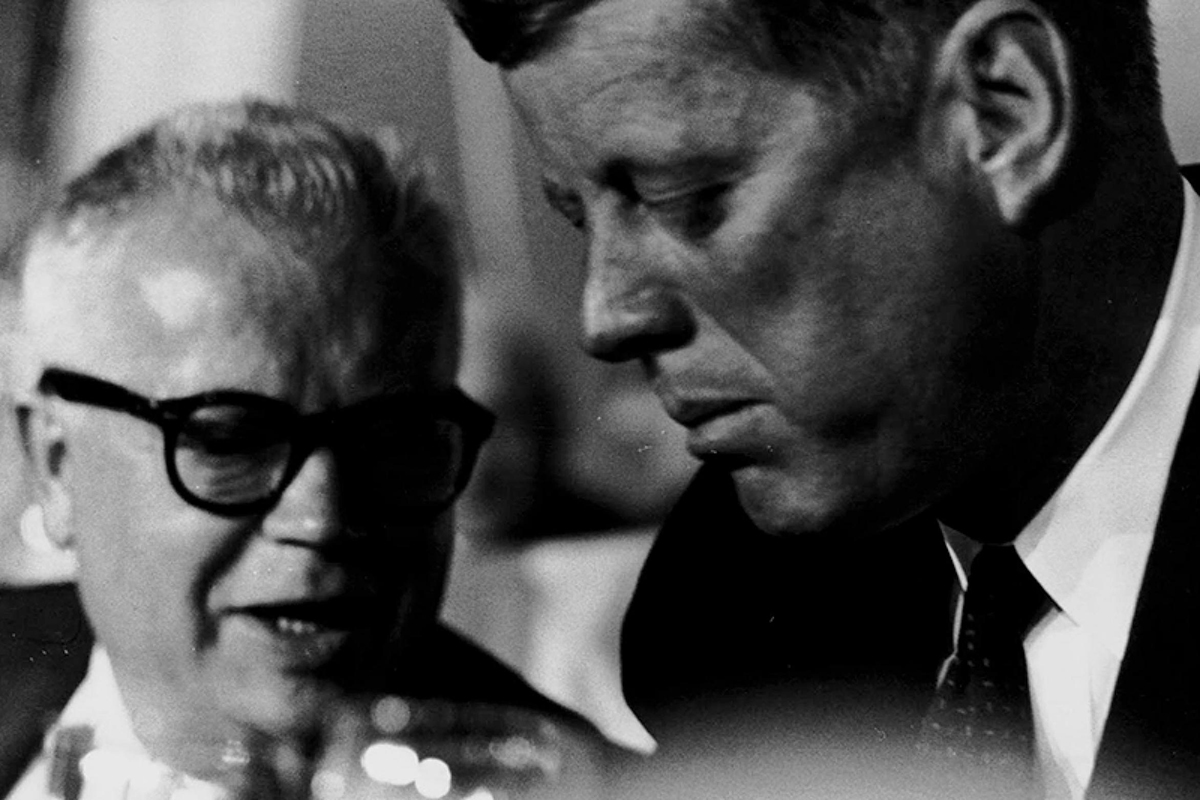Gift supports ILR School's Kheel Center archives
By Tracy Kinne

A prominent union leader’s daughter who worked to support the struggling European labor movement in the wake of World War II has bequeathed a $100,000 endowment to the ILR School’s Kheel Center for Labor-Management Documentation & Archives.
The estate of Jean Dubinsky Appleton has established the fund to support the International Ladies’ Garment Workers’ Union collection. Appleton’s father was David Dubinsky, president of the union from 1932 to 1966.
Appleton died in 2015 at the age of 95. Her daughter, Ryna Segal, worked to establish the fund. It will support the International Ladies’ Garment Workers’ Union collection at the Kheel Center through fellowships for schoolteachers, travel expenses for students using the collection for research and dissertations, funds to conduct oral histories with former union officials, and digitization and preservation of collections materials.
The endowment also will support translations of collection materials in Yiddish, the language of many union workers in the needle trades.
Dubinsky, one of the best known labor leaders of the 20th century, was a small man with a big voice and a thick Yiddish accent, said Cheryl Beredo, director of the Kheel Center.
“He was a larger than life personality,” she said, “and he led one of this country’s great unions for over three decades.”
Dubinsky’s work is documented in his papers, which make up a large part of the Kheel Center’s International Ladies’ Garment Workers’ Union collection. That collection, plus others, makes the Kheel Center the world’s largest repository of needle trades’ archival material.
The Appleton gift also funds new work. “It expands some of the work we’re doing and makes it possible to do some new things,” Beredo said.
Dubinsky, born in Poland, became a baker as a teen and organized a strike at age 15. He was imprisoned at age 16 by Russian police for union activities, but escaped after 18 months.
He came to New York City in 1911, where he worked as a cutter in the dress industry and became a leader in the garment workers’ union, which grew significantly under his leadership, especially in the 1930s and 1940s, when it rose to 450,000 members. The union is credited with improving working and living conditions for thousands of immigrant workers.
In 1995, the union joined the Amalgamated Clothing & Textile Workers Union to form the Union of Needletrades, Industrial and Textile Employees. It later merged with the Hotel Employees and Restaurant Employees International Union to form UNITE HERE.
Appleton worked in the labor movement with her mother, Emma, and her father. Appleton’s second husband, Shelley Appleton, was secretary-treasurer of the garment workers’ union.
Appleton worked with many political and labor leaders, educators and humanitarians, including Pope Pius XII, Eleanor Roosevelt, Golda Meir, John Stevenson, Marion Anderson and Yitzhak Rabin.
She also developed and led the Jewelry History Department at the Fashion Institute of Technology and founded the American Society of Jewelry Historians.
Tracy Kinne is a freelance writer for the ILR School.
Media Contact
Get Cornell news delivered right to your inbox.
Subscribe